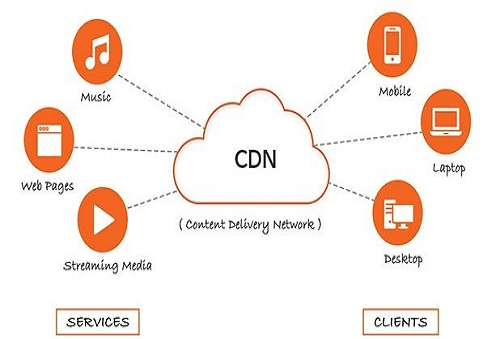What is a CDN endpoint?

It’s safe to say there’s a healthy gap between creative entrepreneurs who have a load of ideas and IT-savvy techies whose language mainly revolves around inventions and the digital space. As a result, business leaders can be quick to turn to Google for answers. If you’re reading this article as a result of having searched for “what is a CDN endpoint” on Google, congratulations! This article will expound just that and more.
Let’s start with the basics
The question “what is a CDN endpoint?” Is easily answered if we understand what those letters stand for and what they contribute to users. To begin, a Content Delivery Network (CDN) is an infrastructure of servers located in many parts of the world. They are initially designed to boost website speed to users. So if a web host origin is based in London, users from Vietnam, Australia, and San Francisco still consume a website’s content efficiently and speedily the same way users from England would.
To reduce latency, CDNs keep cached content on servers in POP locations that are proximally closer to international users. The servers that are nearest a user are called CDN edge servers. Say one of your users is from the Philippines, when you make use of a CDN and one of its servers is in Tokyo, for example, your Filipino site visitor is consuming your web content from Tokyo and not from your actual web host origin which is mostly in Western areas.
BelugaCDN has 28 global POPs and 9 SuperPOPs, so your web content is guaranteed to get to your end-users wherever they may be in the globe.
Let’s talk about terminologies
All these discussed, the question remains: what is a CDN endpoint? Let’s start with the first word. An endpoint is basically a destination and a launching point. As the term, itself implies it is the “end point.” In other words, it is a node that’s linked to the internet and receives communication and content back and forth multiple other servers. Simply put, an endpoint can refer to a switch, modem, bridge, hub, or in this case—and as already written—a server. POPs, on the other hand, are Points of Presence. These are where your servers are located. Hence, the word presence.
Let’s talk about the process
Let’s break it down for easier comprehension:
- A user makes a request (this is when they open a file, or play a video, or click on a picture to enlarge it) by using a URL with a dedicated domain. This domain can be a custom domain or an endpoint hostname.
- The DNS then directs the request to the most ideal POP, which is the server that’s closest to a user.
- If an edge server in the POP doesn’t have your web content cached, it requests for the updated version of your site from the origin server and then stores it to the server in the POP, making it easier and quicker for your user to access your web content much better the next time they visit your site.
In some cases, CDNs can automatically obtain whatever update your site has. Whatever the case, the bottom line of a CDN remains: it better distributes your site’s content much more efficiently.
Simply put, you must sign up with a BelugaCDN account to have a CDN profile, which, coincidentally, will also serve as a bunch of CDN endpoints. Each CDN endpoint symbolizes a particular configuration of access.
Why do I need it?
Every website owner could use a CDN to improve its loading speed. When you’re bent on making a mark on the world wide web, it’s a must for you to equally deliver to your users regardless of where they are on the planet. If your prime users aren’t all that plenty and they’re mostly in one region only, perhaps a CDN would only be an additional expense. But if you run a growing empire and are determined to multiply your reach, a CDN could go a long way.
Remember that CDNs primarily improve loading speed to your users. If your website gets a good amount of traffic and you see that you have hundreds of site visitors accessing your digital home all at once, then you’re going to need a CDN for sure. There are a variety of web hosts that do a good job of keeping your content looking fresh and aesthetic, but these web hosts aren’t designed to cater to hundreds and thousands of one website’s users simultaneously. When this happens, your site is bound to crash and your visitors will notice a specific slowness on your website.
Which CDN is best, you ask? Click here to get a free trial from the best CDN there is in town.
Power-up your Content Delivery
30 Day Free Trial Cancel Anytime
What is Content Delivery Network